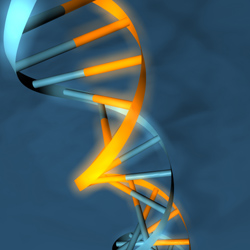The importance of long telomeres
The telomere is a region of repetitive DNA at the end of a chromosome. With each successive division, part of the telomere is used up but can be maintained by the enzyme telomerase reverse transcriptase. Shortened telomeres are associated with replication problems and most probably ageing. The implications of the length of telomeres and the continued production of telomerase cannot therefore be understated. Project partners at the Spanish National Cancer Centre (CNIO) have a long distinguished record of research into these structures. As part of TELOSENS, they have continued their research into the role of the telomere, cell development and radiation sensitivity. The Spanish-based team showed that more diminutive telomeres rejoin to double-strand breaks (DSBs). This impairs the repair of the breaks which can be caused by radiation damage. Not only this, but cutting the length also led to an increased sensitivity to genotoxic agents such as MNU (N-nitroso-N-methylurea) and oxidative stress. Of particular relevance in today's research arena is the impact of telomere length on stem cell integrity. The Spanish scientists discovered that proliferation of adult stem cells in vitro is profoundly affected by telomere shortening but this is not the case in embryonic stem cells. For epidermal stem cells and tumour development, shortening of the telomere affected mobilisation. Mice with defective short telomeres showed premature ageing of the skin but a decreased tendency towards tumourigenesis. However, when telomerase was over-expressed, the stem cells were mobilised and the mice were more prone to tumour development. The study of Fanconi anaemia (FA) may also be able to shed more light on the importance of telomeres. Patients with FA show accelerated telomere shortening and unusual sensitivity to ionising radiation. The CNIO team found that attrition at the telomere region was a result of the disease, not action of the FANCG gene. Research on the regions at the ends of chromosomes could yield promising anti-cancer therapies. Results have already pointed to the use of telomerase inhibitors based on porphyrin and radiotherapy to promote cell death. Telomerase-based therapies could also be used in FA to preserve the telomere length threatened by the disease.







